|
Available technologies
| There are various plants exploiting biomass and biogas for the production of electrical and thermal energy: |
COMPACT BIOGAS PLANTS, FOR FARMS:
These plants are proper to farms with at least 50 head of cattle considering the addition of vegetable waste.
Here are the advantages of such plant:
| - |
Low costs |
| - |
Disposal of organic remains not linked to the agricultural activity |
| - |
Production of electrical and thermal energy with big profits |
| - |
Possible increase of earnings in case of farms syndicate |
| - |
Production of electrical and thermal energy without CO² emissions |
|
|
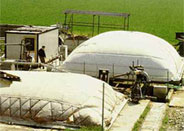
|
COMPOSTING BIOGAS PLANTS, FOR INDUSTRIES
In these plants biogas is produced through the fermentation of organic biomass according to a process called “Thermophile”, i.e. in a warm environment, through bacteria.
Here are the advantages of such plant:
| - |
Disposal of organic remains (humid fraction) |
| - |
Absence of smell during the process |
| - |
production of precious compound and liquid soil |
| - |
Production of electrical and thermal energy without CO² emissions |
|
|
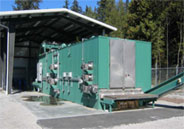
|
COMBINED PLANTS (PURIFICATION AND FERMENTATION) FOR THE PRODUCTION OF BIOGAS FROM WASTE WATER
These plants use mud in the waste water collected in the purifier to produce biogas. Together with mud, organic waste from slaughterhouses or big restaurants are fermented too. This allows to increase the production of biogas and to speed up the time of PAY BACK of the system.
Here are the advantages of such plant:
| - |
Lower costs of management of the purifier thanks to the production of electrical energy |
| - |
Use of big quantities of organic waste per year with the reduction of waste brought to the municipal dumps |
| - |
Production of electrical and thermal energy without CO² emissions |
|
|
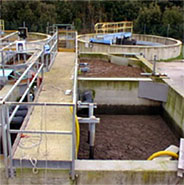
|
BIODIESEL
Biodiesel is the most known and interesting biofuel. Already during the Second World War biodiesel was produced from rape oil through the same processes, which have been improved nowadays. The by-products are glycerin and fertilizers, which can be put into the market after a simple purification. For the production of biodiesel the following substances can be used:
| - |
Natural vegetable oils |
| - |
Waste vegetable oils |
| - |
Vegetable and animal fat (by-products of slaughtering) |
Here are the advantages of the use of biodiesel in the explosion engines:
| - |
It reduces the emission of polluting substances till 50%; |
| - |
It is compatible with the catalyst; |
| - |
Very low content of sulphur (< 0,001%), therefore it doesn't help in developing acid rain; |
| - |
No dangerous material (it can be sold in traditional tins in the supermarkets); |
| - |
Absence of benzol and other cancerogenic components; |
| - |
Highly BIODEGRADABLE, about 99% after only 20 days; |
| - |
In case of leak it doesn't pollute the soil or the water (if a ship containing rape oil was wrecked, it would become food for fishes); |
| - |
High lubricating power with the decrease of the motor's wear; |
| - |
balance with the CO² absorbed by the plants. |
The emissions in a biodiesel motor are enormously reduced compared to a similar motor supplied by traditional petrol:
| - SOX |
reduction of 100% |
| - CO |
reduction of 5/10% |
| - HC |
reduction of 20/40% |
| - Dust |
reduction of 40/50% |
| - CO² |
balance with the CO² absorbed by the plants |
| - NOX |
reduction till 10% |
|
|

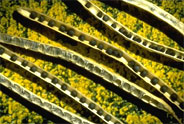 |
THE PRODUCTION OF BIODIESEL
Biodiesel can be produced from the rape cultivation:
| - |
From 1 hectare of soil you can obtain 1.2 tons of rape oil, which can be completely transformed into biodiesel; |
| - |
From the rape grinding you can obtain 2 tons of feedstuff with a very high protein content; |
| - |
From the esterification of the rape oil you can obtain 100kg of glycerine and 30kg of potassic fertilizer; |
Biodiesel can be produced from vegetable oils and food fat:
| - |
From 1 ton of oils or fat you can obtain about 1 ton of biodiesel |
While rape can be cultivated, the use of oils and fat depends on the food habits of a country. Here is the consumption of fat per head in some countries in 1999:
| - |
88 kg in the Netherlands |
| - |
42 kg in Germany |
| - |
22 kg in Brazil |
At present oils and fat are already collected to produce feedstuff. |
|
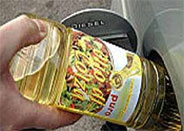
|
|
| |
» Available technologies
|
|
 |
|
 |
|
